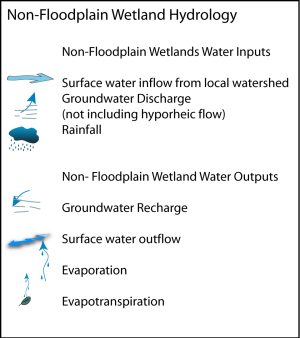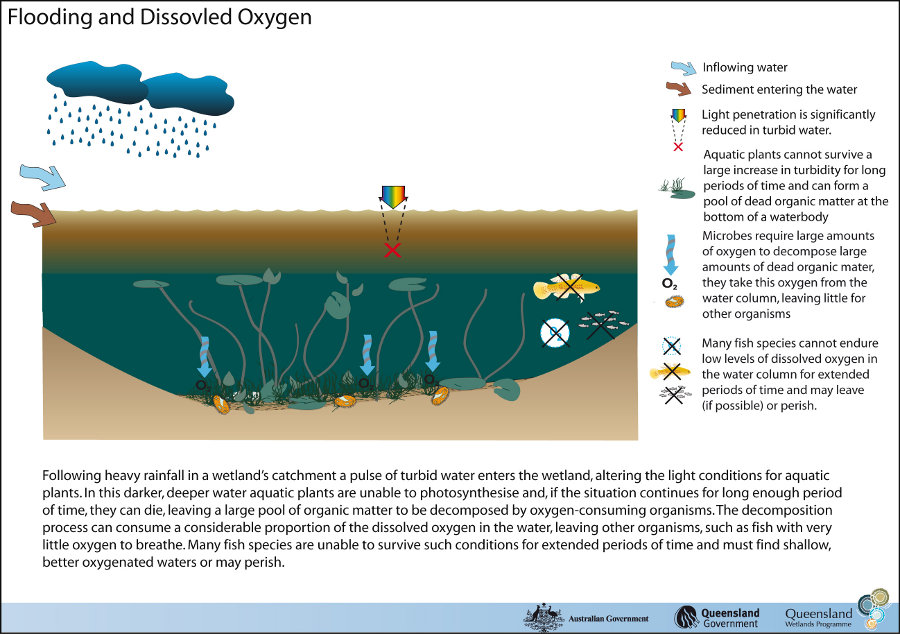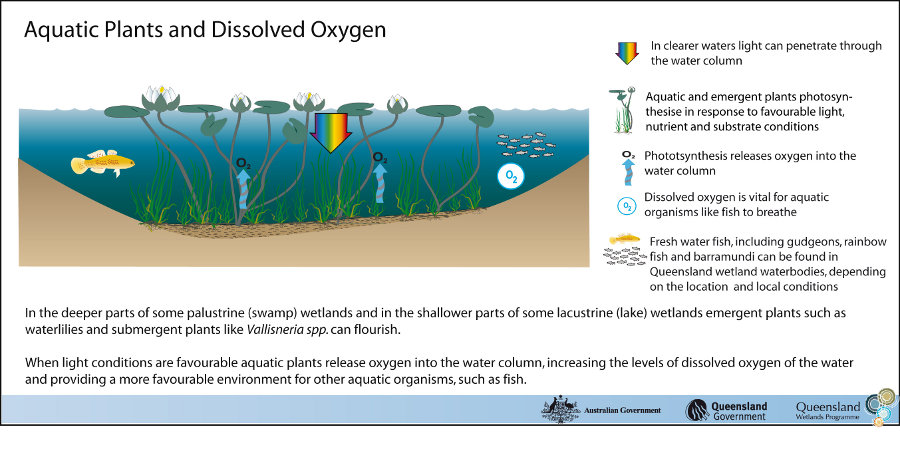|
|
Coastal and subcoastal non-floodplain wet heath swampCoastal and subcoastal non-floodplain wet heath swamp – HydrologyClick on elements of the model or select from the tabs below
Non-floodplain wetlands can be flushed with rain, run-off from the local watershed and from groundwater discharge, or a combination of these sources. If groundwater table levels and substrate permeability permit, this can lead to more constant systems. This wetland habitat type can play a role in groundwater recharge/discharge. An important point to note is that groundwater flow tends to be clear (not turbid), compared to surface water flow. Water OutputsEvaporation, transpiration and groundwater recharge can lead these systems to dry out, sometimes completely. Water may also flow out to the ocean via distributary channels, depending on topography. Non-floodplain heath swamps typically occur where there is enough rainfall, local watershed run-off, overbank flow and/or groundwater discharge to maintain a seasonally high water table. Water tables in heath swamps, therefore, dry out seasonally, creating hydrological conditions that are favourable for the growth of heath vegetation. Areas that have a more permanent water table tend to have more grass, herb and sedge growth.
Last updated: 22 March 2013 This page should be cited as: Department of Environment, Science and Innovation, Queensland (2013) Coastal and subcoastal non-floodplain wet heath swamp – Hydrology, WetlandInfo website, accessed 8 May 2025. Available at: https://wetlandinfo.des.qld.gov.au/wetlands/ecology/aquatic-ecosystems-natural/palustrine/non-floodplain-heath/hydrology.html |

 — Department of the Environment, Tourism, Science and Innovation
— Department of the Environment, Tourism, Science and Innovation






